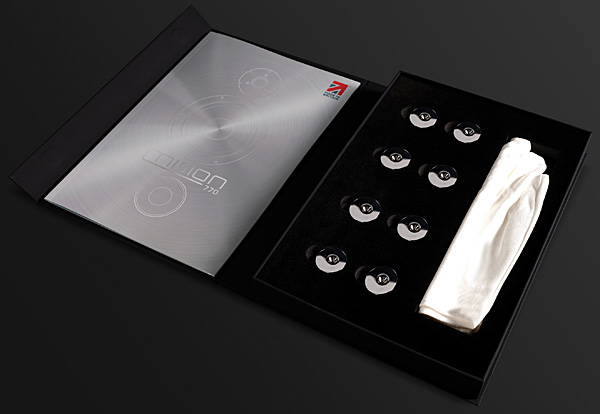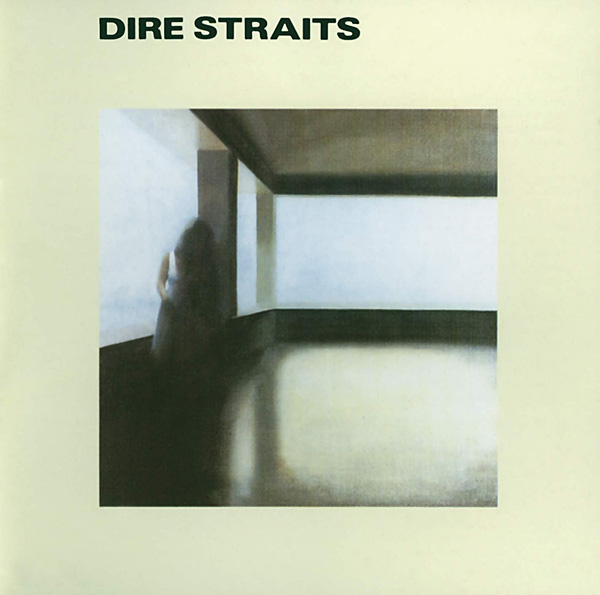| Columns Retired Columns & Blogs |
I hate asking questions like this, but why do PM's FR measurements always look so much worse than your own? The upcoming Paradigm Founder measurements will probably be no different
Setting up
The main source of music was my Roon Nucleus+ server feeding audio data over my network either to an MBL N31, a Bel Canto e1X DAC, or a dCS Rossini Apex, all of which were connected directly to a pair of Parasound Halo JC 1+ monoblocks. I didn't use the Mission 770s' magnetically attached grilles, and the speakers were single-wired with AudioQuest Robin Hood cable.

Regarding the low bass, the 770s were not overly fussy about where they were placed. I ended up with positions that gave the most even balance from the midbass region through to the lower midrange. The front baffles were 76" from the wall behind the speakers, the right-hand woofer 51" from the books that line that speaker's closest sidewall, and the left-hand woofer 34" from the LPs that line that speaker's sidewall. The speakers were 134" from the positions of my ears, and with the 770s sitting on their stands, the tweeters were 37" from the floor, level with my ears.

Listening
The 770s reproduced the 1/3-octave warble tones on my Editor's Choice CD (STPH016-2) cleanly down to the 40Hz band, with the 63Hz and 32Hz tones reinforced by room modes. The 25Hz tone was audible at my usual listening level, but I couldn't hear the 20Hz tone. I heard no audible wind noise from the port with these last two tones. The warble tones sounded clean, with no distortion. The half-step–spaced tonebursts on Editor's Choice spoke cleanly and evenly down to 32Hz, though those just below 1kHz and between 2kHz and 4kHz were slightly accentuated. Listening to the enclosure's walls with a stethoscope while the tonebursts played, I could hear some liveliness in a narrow band centered around 300Hz, especially on the rear panel.
The dual-mono pink noise track on Editor's Choice was reproduced as a stable central image, though it was not as narrowly defined as it is with minimonitors like the KEF LS50s. The lower midrange sounded excessive if I slouched in my chair, and a hollow coloration became evident if I raised myself up so I could see the top of the enclosures. Otherwise, the noise sounded smoothly balanced, if a touch on the warm side and with a slight edge in the presence region.
"If a component cannot properly reproduce the musical middle range, then its other performance attributes are irrelevant," wrote Stereophile's founder, J. Gordon Holt, on the cover of our October 1978 issue, adding in 1985 that "Midrange accuracy should be the starting point of loudspeaker design."
The glory of the 1978 Mission 770 was its midrange, and throughout my auditioning of the 2022 770, I kept being reminded of that glory. The new speaker did indeed "properly reproduce the musical middle range," and I found myself listening to many vocal recordings with the 770s.

I hadn't listened to Chet Baker's in-your-face interpretation of "My Funny Valentine" (16/44.1 ALAC file, ripped from My Funny Valentine CD, Blue Note) for years, but, triggered by Rogier van Bakel's "My Back Pages" essay in March,I cued it up. I had only intended to listen to the title track but, fascinated by how clearly the speakers were allowing me to hear how effortlessly Baker wrapped what there was of his singing voice around the lyrics, I stayed for the entire set—though I wished the singer had either stood a little farther away from the microphone or the engineers had allowed the band to get a little closer.

To my mind, the perfect recorded balance between the singer and the backing group was achieved with Shelby Lynne's "Just a Little Lovin'" from her album of the same name (24/192 FLAC, Analogue Productions/Qobuz). The plaintive quality of her vocal was plainly evident on the Missions but without being exaggerated or thrust forward. With the 770s, I was made more aware than usual of the ironic nature of Lynne's interpretation of what should have been positive-feeling lyrics. This wasn't due to any exaggeration of the tonal balance by the speakers, though the reverb on the snare drum rim shots was well resolved by the 770s, as was the lesser amount of reverb on the Fender Rhodes piano. As was, also, the faint pre-echo in what was supposed to be the silence before the bridge. (Someone must have neglected to store the analog tape tails-out so that the print-through from adjacent tape layers occurred after the start of the music rather than before.)

A recording I had in heavy rotation in the late 1970s, around the time I auditioned the original Mission 770, was the 1964 performance of Gerald Finzi's Dies Natalis with the English Chamber Orchestra conducted by the composer's son Christopher (16/44.1 ALAC, ripped from CD, EMI Studio). This was also a recording I hadn't played in too long a time. The image of tenor soloist Wilfred Brown, unlike that of Chet Baker, was correctly proportioned relative to the instrumental accompaniment. Again with the Mission speakers, I found myself transported by how the singer interpreted the lyrics.

The 770's low frequencies were both well-extended and articulate. The subdued growl of the bass guitar on "Just a Little Lovin'" was not obscured by the kickdrum. My Fender Precision bass guitar on the channel ID track on Editor's Choice was reproduced with an excellent combination of upper-bass weight and transient attack. Charlie Haden's double bass on "Straight No Chaser," from Ginger Baker's Going Back Home (16/44.1 ALAC, ripped from CD, Atlantic 756 782632-2), was warm-sounding but clearly defined. And when I played Dire Straits' "Sultans of Swing" (24/192 MQA, Tidal), the bass guitar did what was necessary, driving along the song.
As I try to finish writing these words, I am listening to an album that I listened to in Farad Azima's apartment in 1978, Jackson Browne's live Running on Empty (24/192 FLAC, Qobuz/Rhino). With the album's final three tracks, that great sequence of "Nothing But Time," "The Load-Out," and "Stay," the new Mission 770s' driving presentation had me getting up from the keyboard, bopping around the room, and singing—"We've got country and western, ... R&B, we've got disco and eight tracks and cassettes in stereo!"—just as the originals had done 44 years ago. As I've written before, a good hi-fi system can be a time machine.
Conclusion
Traditionally, a reviewer lists a loudspeaker's performance in specific regions: "The bass was ..., the midrange was ..., the high frequencies were ..., the stereo imaging was ..., etc." This proved more difficult to do with the Mission 770 than I had anticipated, because the loudspeaker's sonic character was in some ways more than the sum of its parts. The highs didn't call attention to themselves, the bass was well-extended and articulate, the stereo imaging was sufficiently well-defined. But all through my time with the Missions, I kept returning to that warm, detailed, and musically involving midrange. That's where the 770 excels, and that's why I recommend it.

I hate asking questions like this, but why do PM's FR measurements always look so much worse than your own? The upcoming Paradigm Founder measurements will probably be no different

There may be other differences but the difference in scale is significant.
Amplitude (vertical scale) spans 30dB in HFN and 50dB in Stereophile. Frequency (horizontal scale) spans 20Hz-60kHz in HFN and 10Hz-30kHz in Stereophile.
As a result, the HFN display would visually emphasize the level deviations even if the data were the same. Also, HFN seems to apply more smoothing.

but it's the "Other differences" I'm referring to. Big deviations that aren't very difficult to glean from the measurements, even taking into account the differences in scale

but it's the "Other differences" I'm referring to. Big deviations that aren't very difficult to glean from the measurements, even taking into account the differences in scale
As well as the different graph scaling mentioned by Kal Rubinson, while there's no smoothing in my speaker response graphs, while Paul Miller at HFN takes his response measurement at a single point in space, I average mine across a 30 degree horizontal angle on the chosen axis.
I wrote about why I do this in the paper on loudspeaker measurements that I presented to the AES in 1997 - www.stereophile.com/content/measuring-loudspeakers-part-three-page-2:
"There is a problem with taking the response at just one point in that there is almost too much information. Some of the fine detail will be specific to just that one point in space. With a loudspeaker whose drive-units are mounted in some kind of vertical array, it seemed sensible to implement some kind of spatial averaging. This would smooth out any position-dependent wrinkles in the measured response, while leaving the significant information intact. Accordingly, my published responses are the average of seven measured responses, taken at 5 degree intervals across a 30 degrees horizontal window on the reference axis."
John Atkinson
Technical Editor Stereophile

I'm still a little fuzzy on the 'too' much information bit that a single point axis responses yield, in the first line of that paragraph from your paper in 1997. I've read that line several times over the years and perhaps I still have confusion here.
The multiple-point measurements minus position-dependent wrinkles seem easy to understand, but it's really the remainder of products (50-degree window) in comparison with the on-axis measurement that gives us a greater definition of the frequency response?
The concept of a wider window in space seems easy enough, but I'm not sure that's it. Does it rather define the direct-on-axis response?

When I saw the post, I thought it was one of JA1's post of vintage reviews.
Then I got to that review in my new Sterophile and realized.
It's almost a dead ringer!

Does the peak at about 6-7 kHz in Fig. 4 change if we put on the grille?
I see similar peak at about 7-8 kHz in Stereophile measurement of Spendor D7, SP100R2, and A7.
Not normalized to on axis response, and with and without grille comparison might help understand those speakers.

Does the peak at about 6-7 kHz in Fig. 4 change if we put on the grille?
It's not a frequency response peak. Rather, as this graph is showing the speaker's horizontal radiation pattern normalized to the on-axis response, it is showing that the suckout in this region in the on-axis response fills in to the speaker's sides.
John Atkinson
Technical Editor, Stereophile

Thanks. What about the ~ 8 kHz 'peaks' of Spendors? Are they peaks, or a fill of on-axis suck-out?